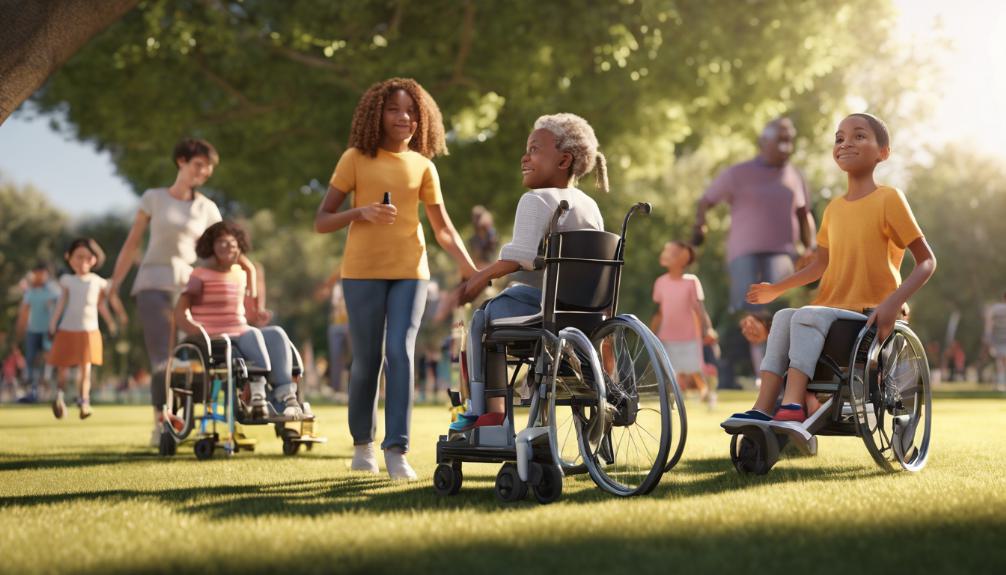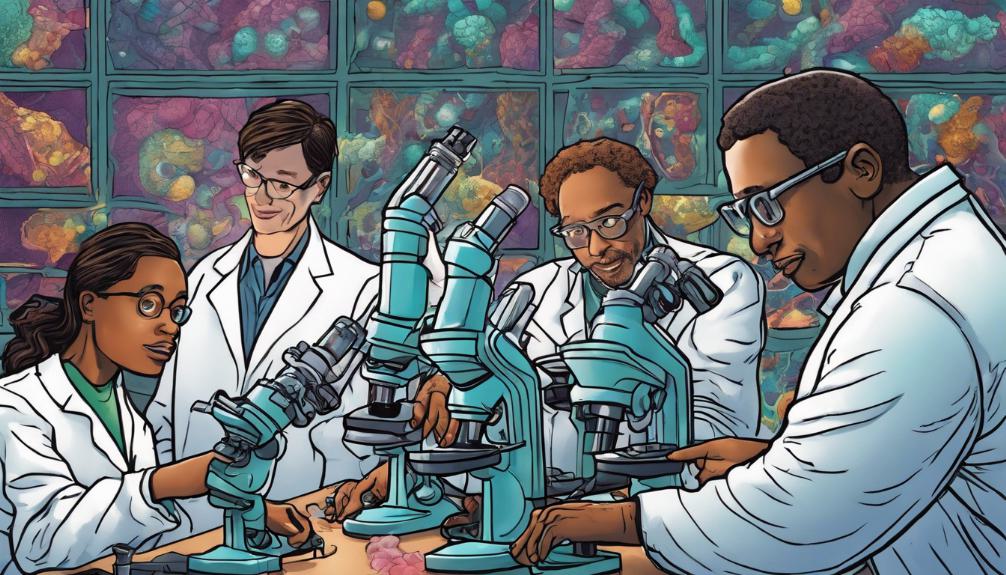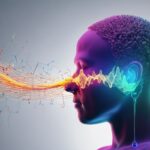Cerebral Palsy
Cerebral palsy, a term that encompasses a group of neurological disorders, remains a significant challenge in the realm of pediatric healthcare and neurodevelopmental medicine. Its origins, deeply rooted in the complex interplay between genetic predispositions and environmental factors, lead to a wide-ranging spectrum of motor disabilities that can profoundly affect an individual's life from childhood into adulthood. Given the intricate nature of cerebral palsy, understanding its multifaceted dimensions—from early detection and diagnosis to evolving treatment strategies—is crucial. As we explore this topic further, one cannot help but ponder the potential advancements in therapeutic approaches that lie on the horizon, promising to enhance the quality of life for those impacted by this condition.

Understanding Cerebral Palsy
Cerebral palsy encompasses a group of neurological disorders that impair movement and muscle coordination due to brain damage sustained in early childhood. This condition represents the most prevalent cause of motor disabilities in children, impacting various aspects of physical development. Symptoms manifest diversely among individuals, including muscle stiffness (spasticity), involuntary movements, and challenges with balance and posture. These symptoms can lead to secondary conditions, such as difficulties with speech, seizures, and cognitive impairments. The early identification of cerebral palsy is crucial, as it can significantly influence the management and improvement of quality of life for affected individuals. Therapeutic interventions aim to enhance mobility, reduce discomfort, and support daily living activities, reflecting a tailored approach to accommodate the unique needs of each person.
Causes and Risk Factors

Understanding the multifaceted origins of cerebral palsy is essential, as it involves an array of factors including genetic anomalies, maternal infections, and complications during childbirth that can lead to the development of this complex neurological disorder. Genetic predispositions may increase susceptibility, while maternal infections such as rubella or cytomegalovirus during pregnancy can adversely affect fetal brain development. Furthermore, complications during the birthing process, including oxygen deprivation and physical trauma, are significant contributors. Premature birth and low birth weight further elevate the risk, as does the presence of multiple births. Additionally, exposure to toxins during pregnancy and severe jaundice shortly after birth can also play a role. Understanding these risk factors is crucial for prevention, early detection, and intervention strategies.
Early Signs and Symptoms

Identifying the early signs and symptoms of cerebral palsy is critical for timely intervention and management of this neurological condition. Early indicators can vary but often include developmental delays in infants, such as not reaching motor skill milestones like sitting up or crawling at the expected ages. Infants may also display unusual muscle tone, either too stiff or too floppy, and exhibit exaggerated reflexes or lack normal reflexes for their age. Difficulty with fine motor tasks, abnormal posture, and favoring one side of the body can also be early signs. Observing these symptoms prompts further investigation into a child's neurological health and can lead to early diagnosis, which is pivotal in managing cerebral palsy effectively, enhancing the quality of life for those affected.
Diagnostic Procedures

Recognizing the early signs and symptoms of cerebral palsy is crucial; however, definitive diagnosis requires a series of specialized procedures. Magnetic Resonance Imaging (MRI) plays a key role in identifying brain abnormalities that might have led to the condition. Complementing MRI, cranial ultrasound is often utilized for infants to detect cerebral abnormalities with less distress and easier access. An Electroencephalogram (EEG) might be employed to identify any epilepsy that can occur with cerebral palsy. Furthermore, specialists might recommend a series of developmental assessments to evaluate motor skills, speech, and developmental milestones. These diagnostic tools, combined with a thorough medical history and physical examination, allow healthcare professionals to accurately diagnose cerebral palsy, distinguishing it from other neurological disorders.
Treatment Options

Treatment options for cerebral palsy are diverse, encompassing a range of therapies, medications, and surgical procedures tailored to individual needs and symptoms. Physical therapy is fundamental, focusing on improving movement, strength, and flexibility. Occupational therapy aids in mastering daily activities, enhancing independence. Speech therapy addresses communication challenges, while also managing eating and swallowing difficulties. Medication management often includes antispasmodics to reduce muscle spasticity and pain relievers. Injections of botulinum toxin have shown efficacy in relaxing spastic muscles. For severe cases, surgical interventions such as selective dorsal rhizotomy may be recommended to decrease spasticity and improve mobility. Additionally, assistive technologies, including customized wheelchairs and communication devices, support daily functioning and enhance quality of life.
Managing Health Challenges

Managing health challenges in individuals with cerebral palsy requires a multifaceted approach that addresses both the physical and emotional aspects of the condition. It is crucial to develop personalized management plans that incorporate a range of therapeutic interventions and support systems. Physical therapy, occupational therapy, and speech therapy are foundational in improving mobility, self-care skills, and communication. Regular monitoring and management of associated conditions, such as spasticity, epilepsy, and nutritional deficiencies, are necessary to prevent complications. Emotional and psychological support for both the individual and their families is essential, recognizing the chronic nature of cerebral palsy and its impact on mental health. Collaboration among healthcare providers, educators, and caregivers ensures a comprehensive care plan that optimizes health, enhances quality of life, and encourages independence.
Current Research Efforts

Building on the comprehensive management plans for individuals with cerebral palsy, current research efforts are focused on exploring innovative treatments and understanding the underlying causes of this complex condition. Researchers are delving into genetic studies to identify potential hereditary links and employing advanced neuroimaging techniques to observe brain function and structure in those affected. Stem cell therapy is another promising area under investigation, with scientists examining its capacity for repairing damaged brain tissue and improving motor functions. Additionally, efforts are being made to evaluate the effectiveness of new physical therapies and medical treatments, such as the impact of Botox on spastic muscles and its implications for bone health. These research initiatives aim to pave the way for breakthroughs that could significantly enhance the quality of life for individuals with cerebral palsy.
Living With Cerebral Palsy

Living with cerebral palsy presents unique challenges and opportunities for individuals and their families to navigate daily life and long-term planning with resilience and support. The condition demands a multidisciplinary approach for management, encompassing physical, occupational, and speech therapies, alongside medical treatments to address symptoms and improve quality of life. Adaptations in the home and school environment, along with assistive technologies, enable greater independence and participation in daily activities. Social and emotional support is crucial, as individuals with cerebral palsy may face barriers to social inclusion and encounter challenges related to self-esteem and mental health. Community resources and networks offer vital support, fostering empowerment and advocacy for individuals with cerebral palsy and their families, helping them to lead fulfilling lives despite the complexities of the condition.
Frequently Asked Questions
How Can Families and Caregivers Best Support the Emotional and Psychological Needs of a Child With Cerebral Palsy?
To optimally support the emotional and psychological needs of a child with a neurological condition affecting movement and coordination, families and caregivers should prioritize establishing a nurturing and understanding environment. Engaging in regular communication, providing access to therapeutic resources, and encouraging social interaction are crucial. Tailoring support to the child's unique needs, fostering independence, and emphasizing their strengths rather than limitations are key strategies. Professional guidance from psychologists and therapists can also be invaluable in addressing specific challenges.
What Are Some Common Misconceptions About Cerebral Palsy That the Public Should Be Aware Of?
Common misconceptions about neurological disorders that affect movement and muscle coordination include the belief that they are all the same, that individuals with these conditions cannot lead productive lives, and that such conditions are always a result of genetics or hereditary factors. It is crucial for the public to understand that these disorders have varied causes, including environmental factors, and that with appropriate support and interventions, individuals can achieve significant milestones and lead fulfilling lives.
How Does Cerebral Palsy Affect the Aging Process, and What Unique Challenges Do Older Adults With Cerebral Palsy Face?
The aging process presents unique challenges for individuals with neurological disorders that affect movement and muscle coordination. As they age, these individuals may experience premature aging, increased functional difficulties in daily and work activities, higher rates of depression, and a condition known as post-impairment syndrome. Managing pain becomes a critical aspect of care, alongside addressing specific health concerns related to sexual health and associated medical conditions through appropriate therapeutic interventions.
In What Ways Can Technology and Innovations in Assistive Devices Enhance the Quality of Life for Those With Cerebral Palsy?
Technological advancements and innovations in assistive devices significantly enhance the quality of life for individuals facing mobility and coordination challenges. These devices, including adaptive equipment, communication aids, and mobility aids, support daily activities, foster independence, and improve social participation. Furthermore, personalized adaptations and the integration of smart technology cater to individual needs, promoting greater autonomy and facilitating easier interaction with the environment. Such innovations are pivotal in addressing the unique requirements of this population.
How Can Educators and Schools Adapt Their Environments and Teaching Strategies to Better Accommodate Students With Cerebral Palsy?
Educators and schools can enhance inclusivity by adapting environments and teaching methodologies to support diverse learning needs. This includes modifying physical spaces to ensure accessibility, employing adaptive technology for interactive learning, and implementing tailored educational strategies that cater to individual capabilities. Professional development focused on understanding and addressing the unique challenges faced by students with physical and learning differences is crucial. Additionally, fostering a supportive community encourages empathy and collaboration among students, enriching the educational experience for all.

This post has been generated by AI and was not reviewed by editors. This is Not legal advice. Please consult with an attorney.




